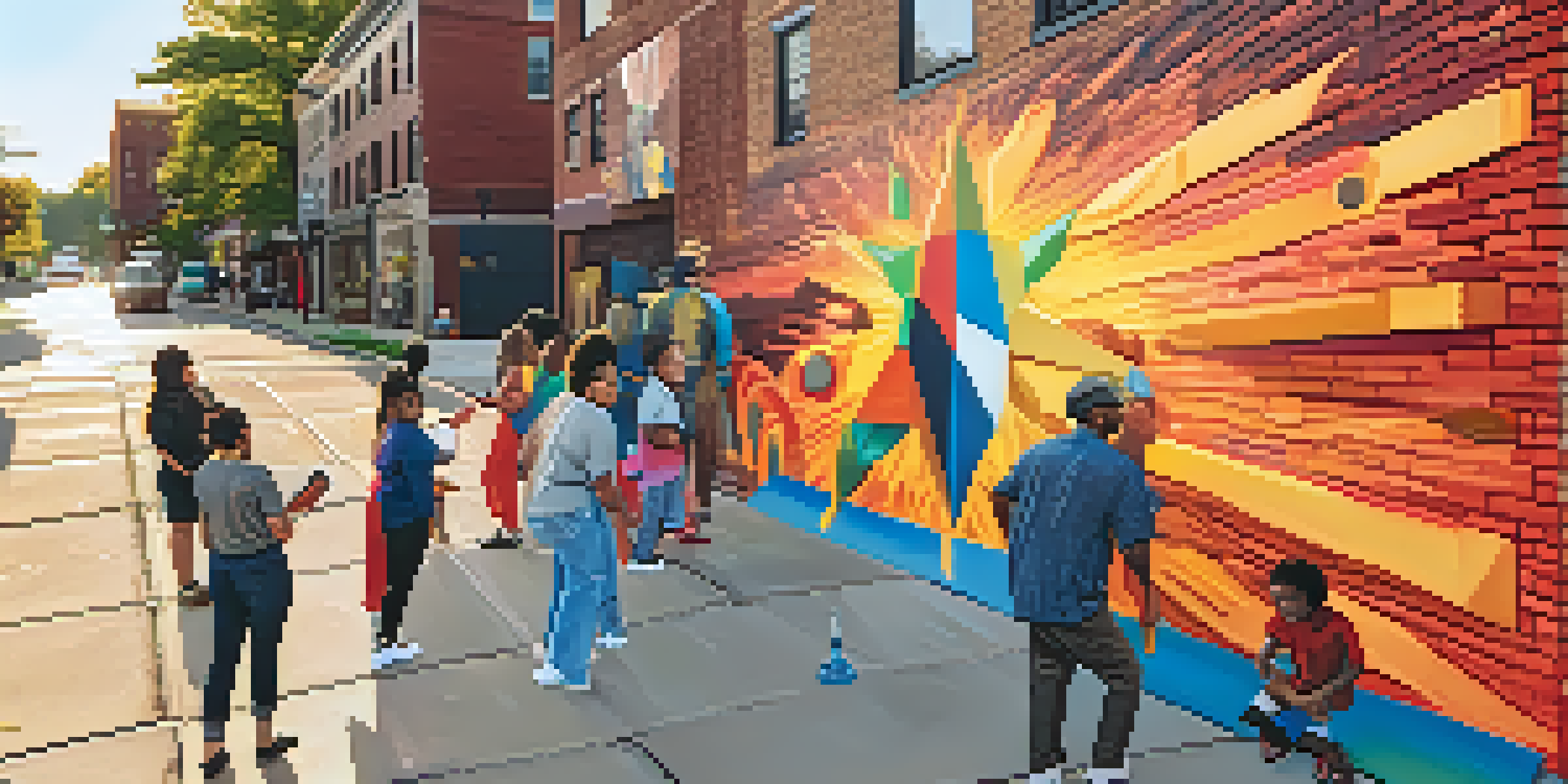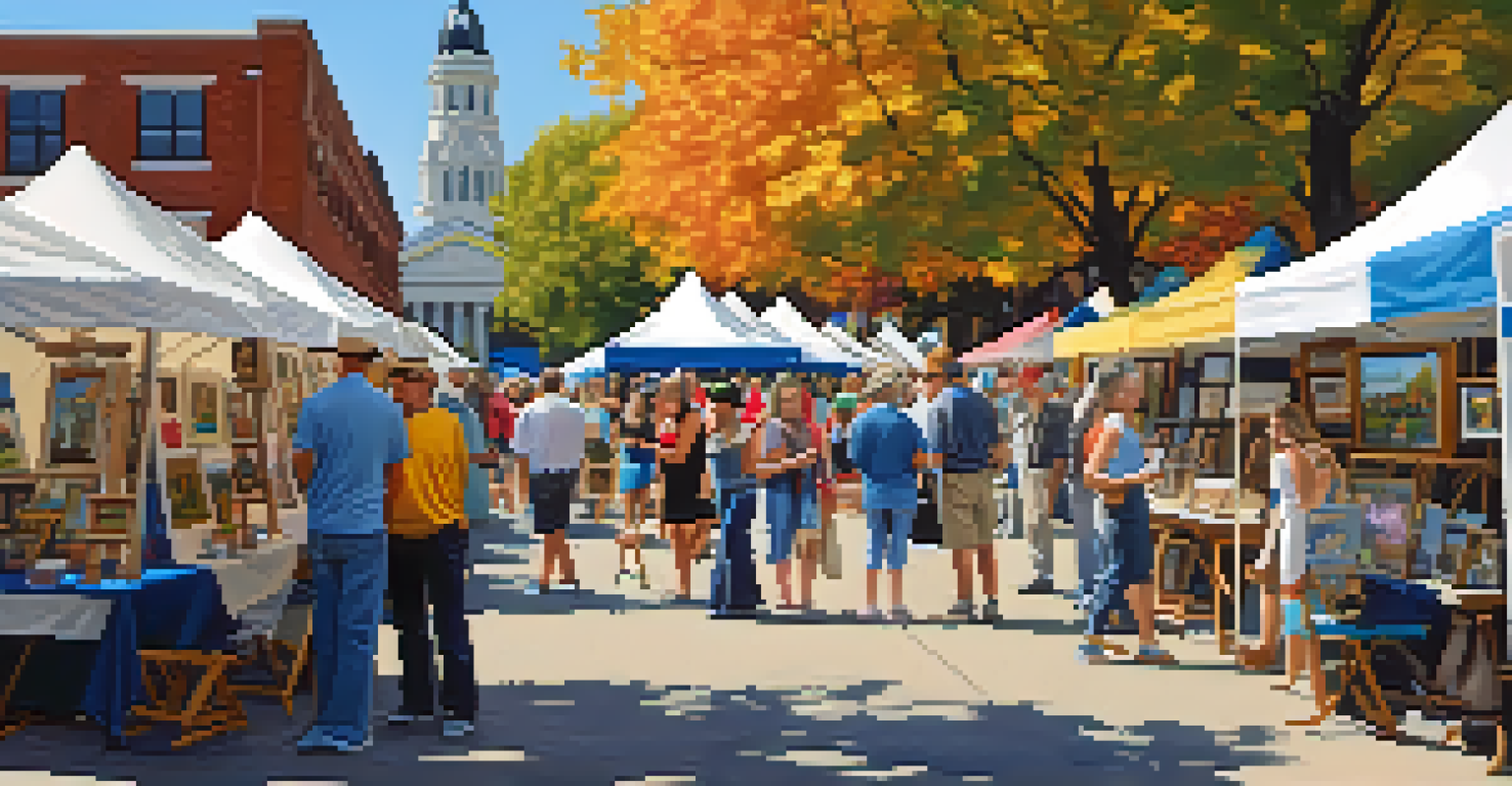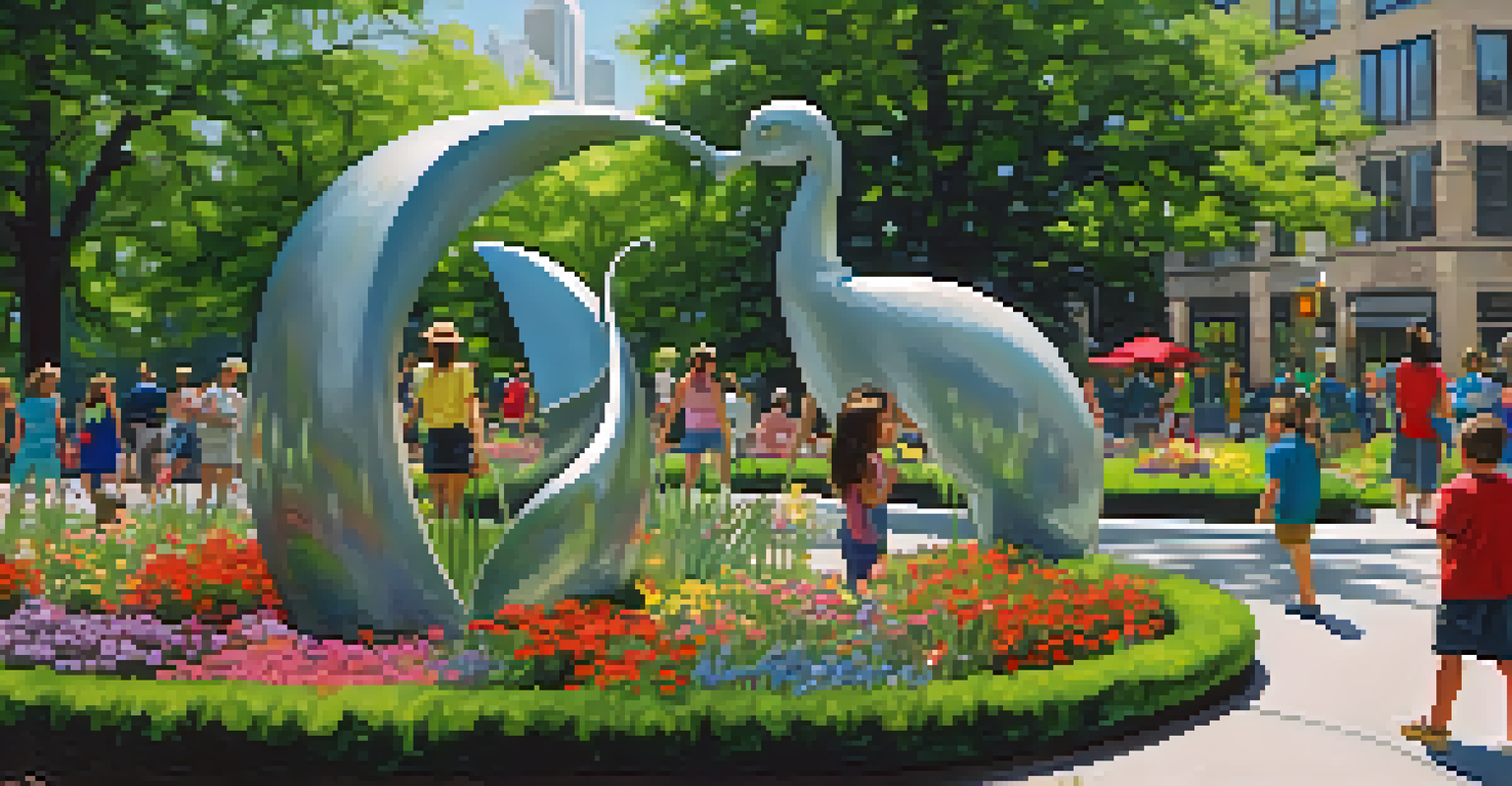Local Artists of St. Louis: Creatives Shaping Culture

The Vibrant Art Scene of St. Louis
St. Louis boasts a rich tapestry of artistic expression that reflects its diverse culture. From the historic Soulard neighborhood to the bustling Grand Center, local artists infuse life into every corner of the city. This vibrant scene is not just about galleries; it’s a dynamic mix of street art, murals, and pop-up exhibitions that invite everyone to engage.
Art is a way to express what is inside us and to build connections with others.
Art in St. Louis goes beyond aesthetics; it tells stories of the community, its history, and its aspirations. Local artists often draw inspiration from the city's unique character, creating pieces that resonate with both residents and visitors. Whether it's a poignant mural depicting social justice themes or an interactive art installation, the city is a canvas waiting to be explored.
As you stroll through various neighborhoods, you'll likely stumble upon an artist at work or a community art event. This accessibility fosters a connection between artists and the public, encouraging collaboration and dialogue. In St. Louis, art is truly a communal experience that shapes cultural narratives.
Spotlighting Emerging Talents
Among the thriving art community are emerging talents who are beginning to make waves in St. Louis and beyond. These artists often bring fresh perspectives and innovative techniques that challenge traditional norms. Their work is characterized by a blend of influences, reflecting both local heritage and global trends.

Many of these emerging artists participate in local art fairs and exhibitions, providing them with platforms to showcase their talents. Events like the St. Louis Art Fair and First Fridays in Grand Center are crucial for networking and visibility. These gatherings not only celebrate creativity but also foster a supportive community where artists can share ideas and collaborate.
Community Art Enhances Engagement
Community art projects in St. Louis foster collaboration and pride among residents while addressing social issues.
Support for emerging artists is vital for the overall growth of the city's art scene. Local organizations and initiatives, such as artist residencies and grant programs, play an essential role in nurturing talent. By investing in these creatives, St. Louis ensures a continuously evolving cultural landscape.
The Role of Community Art Projects
Community art projects are a cornerstone of St. Louis's creative landscape, bringing residents together to collaborate on meaningful initiatives. These projects often address social issues, aiming to promote awareness and inspire change. From neighborhood murals to collaborative installations, they create a sense of pride and ownership within the community.
The role of the artist is to ask questions, not to answer them.
One notable example is the 'Paint the City' initiative, which engages local artists to transform public spaces into vibrant art hubs. This not only beautifies the city but also sparks conversations among residents about unity and identity. Such projects often invite participation from people of all ages and backgrounds, making art a truly communal endeavor.
Through community art, St. Louis artists can amplify voices that might otherwise go unheard. These initiatives foster inclusivity, allowing diverse perspectives to shape the city’s cultural narrative. Ultimately, they reinforce the idea that art belongs to everyone and can be a powerful tool for social change.
How Local Artists Influence Cultural Identity
Local artists play a pivotal role in shaping the cultural identity of St. Louis. Their artwork often reflects the city's rich history and diverse communities, providing a visual narrative that resonates with its inhabitants. By exploring themes of identity, heritage, and social justice, artists help foster a deeper understanding of what it means to be a part of this vibrant city.
Art serves as a mirror, reflecting the challenges and triumphs of the community. For instance, the work of artists like Damon Davis, who addresses issues of race and history, sparks vital conversations that contribute to cultural awareness. Through their creative expressions, these artists encourage viewers to engage with complex topics and consider new perspectives.
Emerging Artists Drive Innovation
Local emerging artists bring fresh perspectives and techniques, contributing to St. Louis's evolving cultural landscape.
Moreover, local art contributes to the city's overall sense of place, helping to define St. Louis's unique character. As visitors admire the artwork, they gain insights into the community's values and struggles. This connection not only enhances tourism but also fosters a sense of belonging for residents.
The Intersection of Art and Activism
In St. Louis, the line between art and activism often blurs, with many local artists using their work to advocate for social change. This intersection is particularly evident in response to significant events, such as the protests following the tragic shooting of Michael Brown in Ferguson. Artists have utilized various mediums to convey powerful messages, raise awareness, and inspire action.
Murals and installations addressing social justice themes can be found throughout the city, serving as both art and a call to action. These pieces challenge viewers to confront uncomfortable truths and engage in dialogue about systemic issues. By transforming public spaces into platforms for activism, artists make their messages accessible to a broader audience.
Artistic activism in St. Louis not only highlights pressing issues but also unites communities around common goals. Local artist groups often collaborate with organizations to amplify their impact, creating a network of support for change. This synergy between art and activism enriches the cultural fabric of the city, making it a dynamic hub for social discourse.
The Impact of Public Art Installations
Public art installations have become a hallmark of St. Louis's artistic landscape, enriching the city's environment and engaging the community. These large-scale artworks often transform underutilized spaces, turning them into vibrant gathering spots. They not only beautify the city but also serve as landmarks that foster civic pride.
One of the most iconic examples is the Citygarden, an outdoor sculpture park that blends art with nature. This space invites residents and visitors alike to interact with art in a unique setting, encouraging exploration and appreciation. Such installations create opportunities for spontaneous social interactions, further strengthening community bonds.
Art as a Tool for Activism
In St. Louis, the intersection of art and activism empowers artists to advocate for social change through their work.
Moreover, public art installations often reflect the history and culture of their surroundings. They can tell local stories, celebrate cultural milestones, or even pay tribute to influential figures. By incorporating the community's narrative into these artworks, artists contribute to a shared sense of identity and belonging.
Supporting Local Artists: How You Can Help
Supporting local artists is crucial for sustaining St. Louis's vibrant art scene. There are many ways individuals can get involved, whether through purchasing artwork, attending exhibitions, or simply spreading the word about local talent. By choosing to buy art from local creators, you not only acquire unique pieces but also directly contribute to their livelihoods.
Participating in local art events, such as gallery openings or craft fairs, is another great way to show support. These events often feature a diverse array of artists and provide them with valuable exposure. Engaging with artists and learning about their work can deepen your appreciation for their craft and the broader art community.

Lastly, consider advocating for local art initiatives and organizations that support artists. Whether it's lobbying for public art funding or volunteering for community art programs, your involvement can make a real difference. By championing local artists, you play a part in shaping the cultural future of St. Louis.